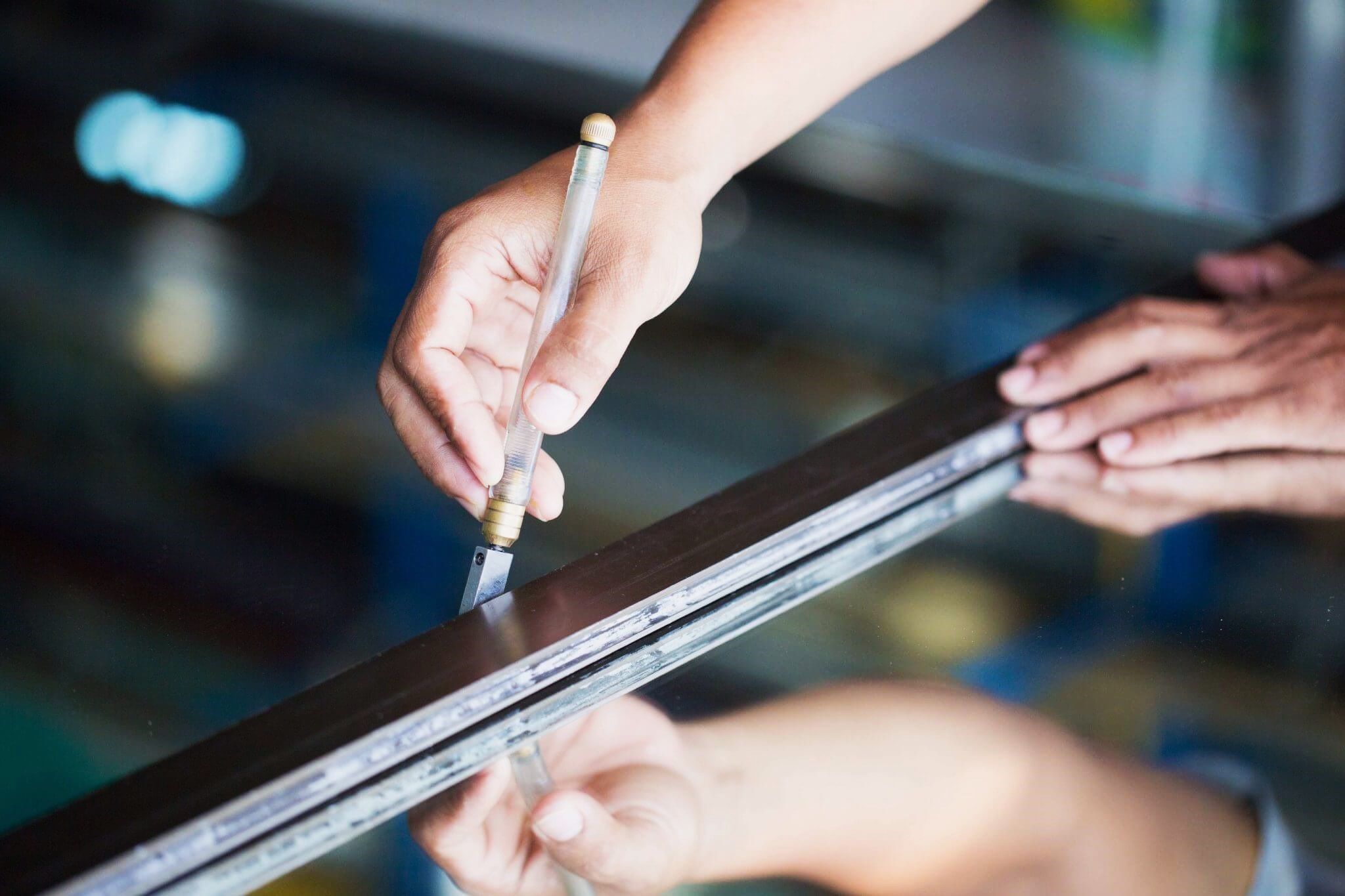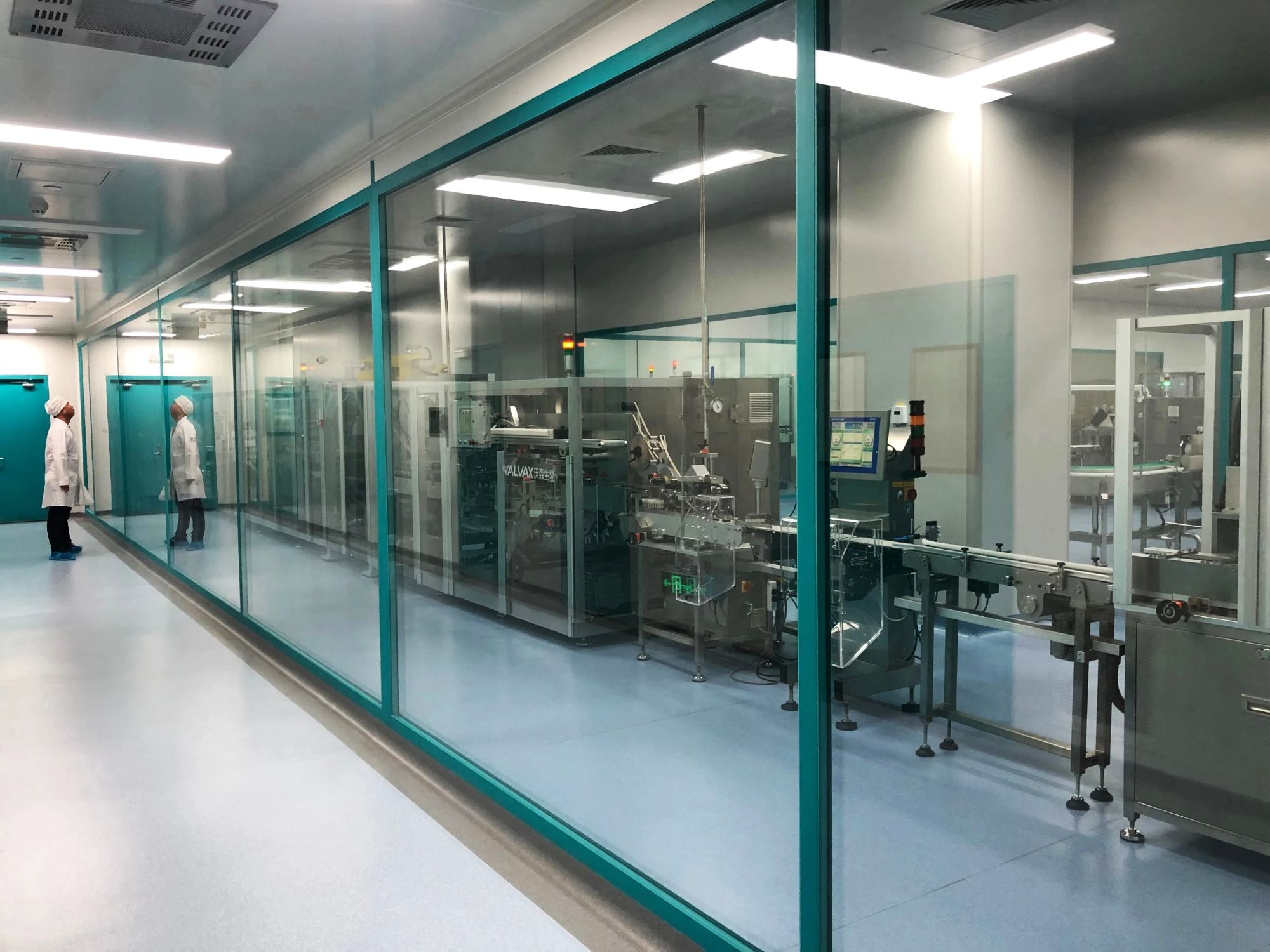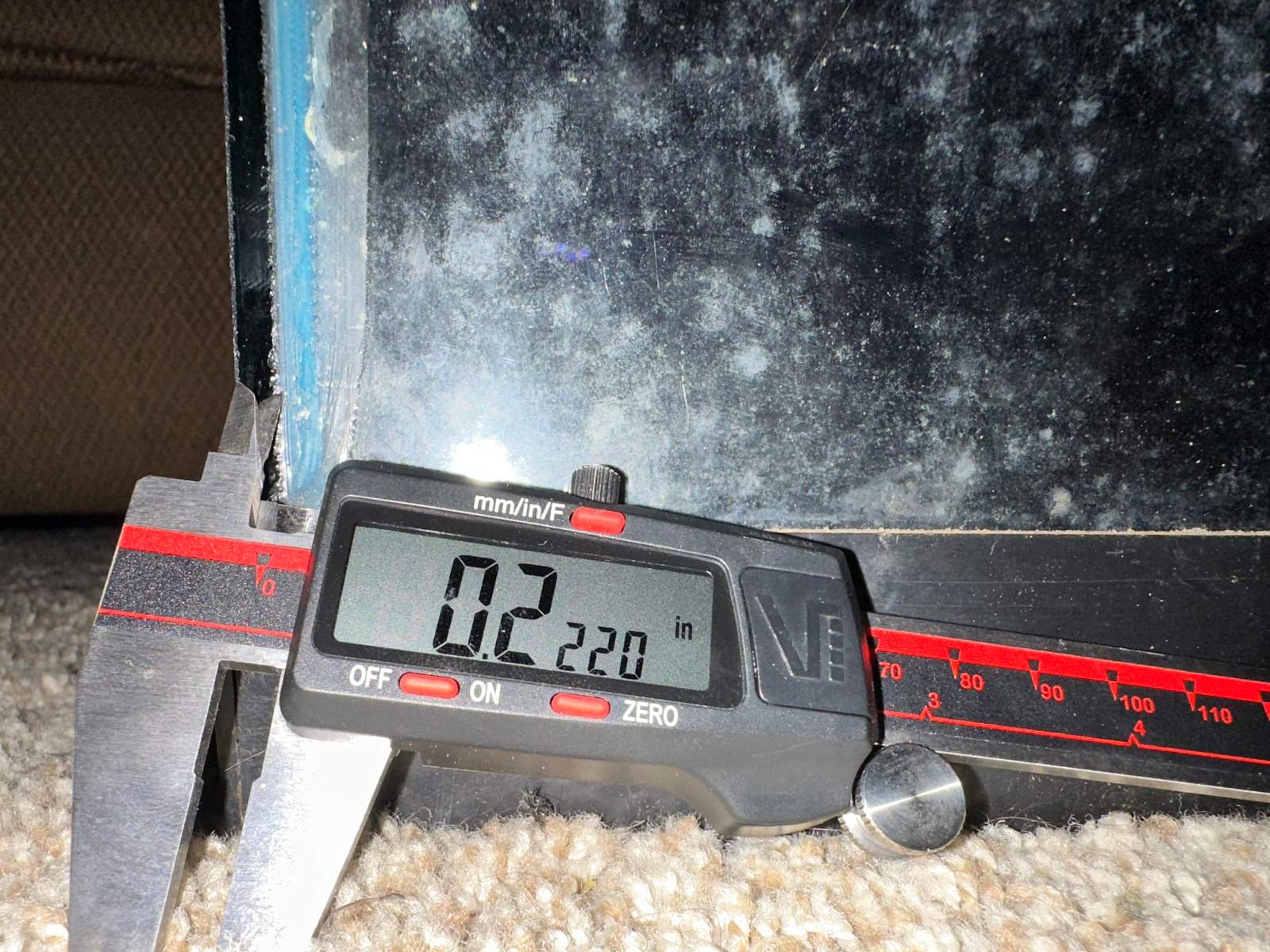Home>Furniture & Design>Interior Design Trends>How Thick Is Tempered Glass


Interior Design Trends
How Thick Is Tempered Glass
Modified: October 20, 2024
Discover the ideal thickness of tempered glass for interior design trends. Learn about the benefits and applications of this durable and stylish material.
(Many of the links in this article redirect to a specific reviewed product. Your purchase of these products through affiliate links helps to generate commission for Storables.com, at no extra cost. Learn more)
Introduction
Tempered glass is a versatile and popular material that has become an integral part of modern interior design and architecture. Its strength, safety features, and aesthetic appeal make it a sought-after choice for a wide range of applications, from residential homes to commercial buildings. Understanding the thickness of tempered glass is crucial for ensuring its suitability for specific uses and environments.
In this article, we will delve into the world of tempered glass, exploring its properties, applications, and the factors that influence its thickness. Whether you are considering incorporating tempered glass into your interior design projects or simply seeking to expand your knowledge, this comprehensive guide will provide valuable insights into the thickness of tempered glass and its significance in various settings.
Let's embark on a journey to unravel the mysteries of tempered glass and gain a deeper appreciation for this remarkable material.
Key Takeaways:
- Tempered glass, known for its strength and safety, comes in various thicknesses tailored for different uses in interior design. It enhances both aesthetics and safety, making it a versatile choice for modern spaces.
- The thickness of tempered glass is crucial, impacting its strength, safety, and visual impact. Designers and architects must consider structural, safety, and aesthetic factors when choosing the right thickness for each project.
Read more: What Is Tempered Glass
What is Tempered Glass?
Tempered glass, also known as toughened glass, is a type of safety glass that is processed through controlled thermal or chemical treatments. This specialized manufacturing process enhances the strength and durability of the glass, making it significantly more resistant to impact and thermal stress compared to standard annealed glass.
The key characteristic of tempered glass lies in its unique internal structure, which is designed to enhance safety. When tempered glass breaks, it shatters into small, granular pieces instead of sharp shards, reducing the risk of severe injuries. This property makes tempered glass an ideal choice for applications where safety is paramount, such as in architectural elements, automotive windows, and household fixtures.
The tempering process involves heating the glass to high temperatures and then rapidly cooling it, creating a state of high surface compression and balanced internal tension. This results in a glass product that is approximately four times stronger than annealed glass of the same thickness. Additionally, tempered glass exhibits resistance to thermal stress, making it suitable for use in environments with fluctuating temperatures.
In addition to its strength and safety features, tempered glass is also valued for its versatility and aesthetic appeal. It can be customized with various tints, coatings, and patterns to complement different design schemes and architectural styles. This adaptability makes tempered glass a popular choice for interior design elements, such as shower enclosures, glass partitions, tabletops, and decorative panels.
The widespread use of tempered glass in both residential and commercial settings underscores its importance in modern construction and interior design. Its ability to withstand high impact and temperature differentials, coupled with its safety characteristics, makes it an indispensable material for a wide range of applications.
In summary, tempered glass is a specialized type of safety glass that undergoes a rigorous tempering process to enhance its strength, durability, and safety features. Its unique properties and versatility have positioned it as a staple material in contemporary interior design and architectural applications, offering both functionality and aesthetic appeal.
The Thickness of Tempered Glass
The thickness of tempered glass plays a pivotal role in determining its suitability for various applications. Unlike standard annealed glass, which is prone to breakage and poses safety hazards, tempered glass is engineered to withstand higher levels of stress and impact. The thickness of tempered glass is a critical factor that directly influences its strength, resilience, and overall performance in different environments.
Tempered glass is available in a range of thicknesses, typically starting from 3mm and extending to 19mm or more for specialized applications. The selection of the appropriate thickness depends on the specific requirements of the intended use, taking into account factors such as structural load, safety regulations, and aesthetic considerations.
In interior design, the thickness of tempered glass is tailored to meet the demands of diverse installations. For instance, in the construction of glass doors and partitions, thicker tempered glass panels are often preferred to ensure structural integrity and enhance sound insulation. Similarly, for glass tabletops and countertops, thicker glass provides added durability and stability, accommodating the weight of objects and sustaining daily use without compromising safety.
The thickness of tempered glass also influences its optical clarity and visual impact. Thicker glass panels may exhibit a greater sense of solidity and presence, making them suitable for creating bold design statements in architectural features and decorative elements. Conversely, thinner tempered glass is favored for applications where a lighter, more delicate aesthetic is desired, such as in glass shelving and display cases.
Furthermore, the thickness of tempered glass is a crucial consideration in the context of safety standards and building codes. Compliance with regulations related to glass thickness ensures that installations meet the necessary structural and safety requirements, providing peace of mind for designers, architects, and property owners.
In summary, the thickness of tempered glass is a multifaceted aspect that encompasses structural, aesthetic, and safety considerations. By carefully evaluating the specific needs of each project and understanding the implications of different thickness options, designers and architects can harness the full potential of tempered glass to create functional, visually striking, and safe interior spaces.
When measuring the thickness of tempered glass, use a micrometer or caliper to get an accurate reading. Keep in mind that tempered glass can vary in thickness depending on its intended use.
Factors Affecting the Thickness of Tempered Glass
The selection of the appropriate thickness for tempered glass is influenced by a myriad of factors that encompass functional, aesthetic, and safety considerations. Understanding these factors is essential for making informed decisions when integrating tempered glass into interior design and architectural projects.
-
Structural Requirements: The structural load and intended use of tempered glass installations are primary determinants of the required thickness. For applications such as glass balustrades, canopies, and structural glazing, thicker tempered glass is essential to withstand the imposed loads and ensure the structural stability of the elements. In contrast, decorative glass panels and artistic installations may benefit from thinner glass to achieve specific design effects without compromising safety.
-
Safety Standards and Regulations: Compliance with industry-specific safety standards and building codes is a critical factor in determining the thickness of tempered glass. These regulations often prescribe minimum thickness requirements based on the intended application and the potential risks associated with glass breakage. By adhering to established standards, designers and architects can ensure that tempered glass installations meet the necessary safety criteria and provide a secure environment for occupants.
-
Environmental Factors: The environmental conditions in which tempered glass will be installed play a significant role in determining the appropriate thickness. Areas prone to high wind loads, seismic activity, or extreme weather conditions may necessitate thicker tempered glass to enhance resistance against external forces and maintain structural integrity. Additionally, considerations such as temperature differentials and exposure to direct sunlight can influence the choice of glass thickness to mitigate thermal stress and ensure long-term performance.
-
Sound Insulation and Acoustic Properties: In applications where sound insulation is a priority, such as glass partitions in office spaces or interior doors, the thickness of tempered glass contributes to its acoustic performance. Thicker glass panels exhibit enhanced sound-dampening capabilities, providing a quieter and more conducive environment for occupants. This factor is particularly relevant in commercial and residential settings where privacy and noise control are essential considerations.
-
Aesthetic Preferences: The desired visual impact and design intent also play a role in determining the thickness of tempered glass. Thicker glass panels may convey a sense of solidity and permanence, making them suitable for creating bold architectural statements and focal points within interior spaces. Conversely, thinner glass can impart a lighter, more delicate aesthetic, ideal for applications where transparency and minimal visual obstruction are desired.
By considering these factors in tandem, designers and architects can make informed decisions regarding the thickness of tempered glass, ensuring that each installation meets the functional, safety, and aesthetic requirements of the project. This holistic approach enables the seamless integration of tempered glass into diverse interior design and architectural contexts, harnessing its strength, safety features, and visual appeal to create captivating and purposeful spaces.
Common Applications of Tempered Glass
Tempered glass finds extensive use in a myriad of interior design and architectural applications, owing to its exceptional strength, safety features, and aesthetic versatility. Its ability to withstand high impact and thermal stress makes it a preferred choice for creating functional, visually striking, and secure environments. Let's explore some of the common applications where tempered glass shines:
-
Shower Enclosures and Doors: In residential and commercial settings, tempered glass is widely employed for crafting sleek and modern shower enclosures and doors. Its durability and safety properties make it an ideal material for enclosing shower spaces, providing a seamless and elegant aesthetic while ensuring user safety.
-
Glass Partitions and Dividers: Within office spaces, retail environments, and residential interiors, tempered glass partitions and dividers offer a contemporary solution for delineating areas while maintaining an open and airy feel. The use of tempered glass in partition systems enhances natural light distribution and fosters a sense of spatial connectivity.
-
Glass Balustrades and Railings: For staircases, balconies, and elevated walkways, tempered glass balustrades and railings offer a combination of safety, durability, and unobstructed views. The use of tempered glass in these applications adds a touch of sophistication and modernity to architectural designs while ensuring compliance with safety regulations.
-
Glass Tabletops and Countertops: In residential kitchens, dining areas, and commercial spaces, tempered glass tabletops and countertops provide a sleek and hygienic surface that is resistant to scratches and heat. The use of tempered glass in these applications elevates the visual appeal of interior spaces while offering practicality and ease of maintenance.
-
Architectural Glazing and Façades: Tempered glass is a staple material in the construction of modern architectural glazing systems and building façades. Its ability to withstand environmental forces, coupled with its optical clarity, allows for the creation of striking and energy-efficient building envelopes that merge form and function seamlessly.
-
Display Cases and Shelving: Retail environments and museum displays often feature tempered glass display cases and shelving units to showcase products and artifacts. The use of tempered glass in these applications provides a transparent and secure platform for presenting items while ensuring visibility and protection.
-
Glass Doors and Entryways: The use of tempered glass in entry doors and interior door systems enhances the visual appeal of spaces while promoting a sense of openness and connectivity. Its strength and safety features make it an ideal choice for creating inviting and secure entryways in both residential and commercial settings.
-
Artistic Installations and Decorative Panels: In the realm of interior design, tempered glass lends itself to artistic installations and decorative panels that add a touch of sophistication and creativity to interior spaces. Its versatility in terms of customization and design options allows for the creation of captivating visual elements that enhance the overall ambiance.
In summary, tempered glass is a versatile material that transcends traditional boundaries, offering a blend of functionality, safety, and aesthetic appeal across a diverse array of applications. Its seamless integration into interior design and architectural projects underscores its significance as a foundational element in shaping modern built environments.
Read more: How To Tell If Glass Is Tempered
Conclusion
In conclusion, the thickness of tempered glass is a critical consideration that intersects with structural, safety, and aesthetic factors, shaping its suitability for diverse interior design and architectural applications. The inherent strength, safety features, and visual versatility of tempered glass position it as a cornerstone material in modern construction and design, offering a harmonious blend of functionality and aesthetic appeal.
By understanding the nuanced interplay of factors that influence the thickness of tempered glass, designers and architects can make informed decisions that align with the specific requirements of each project. From creating sleek shower enclosures and glass partitions to crafting striking architectural glazing and display cases, tempered glass serves as a versatile canvas for realizing innovative design concepts while prioritizing safety and durability.
The widespread use of tempered glass in residential, commercial, and institutional settings underscores its enduring relevance in shaping contemporary interior spaces. Its ability to foster openness, connectivity, and visual transparency while ensuring safety and structural integrity makes it an indispensable asset for realizing design visions that seamlessly blend form and function.
As the demand for sustainable, visually compelling, and secure interior environments continues to evolve, tempered glass stands poised to play a pivotal role in shaping the future of interior design and architecture. Its adaptability to diverse applications, coupled with its enduring strength and safety features, positions it as a material of choice for designers and architects seeking to push the boundaries of creativity and innovation.
In essence, the thickness of tempered glass represents a crucial dimension in the realm of interior design and architecture, where safety, aesthetics, and structural performance converge to create spaces that inspire, protect, and endure. Embracing the potential of tempered glass as a transformative design element opens doors to a world of possibilities, where form meets function and where safety harmonizes with style, shaping interior environments that captivate the senses and elevate the human experience.
Frequently Asked Questions about How Thick Is Tempered Glass
Was this page helpful?
At Storables.com, we guarantee accurate and reliable information. Our content, validated by Expert Board Contributors, is crafted following stringent Editorial Policies. We're committed to providing you with well-researched, expert-backed insights for all your informational needs.















0 thoughts on “How Thick Is Tempered Glass”